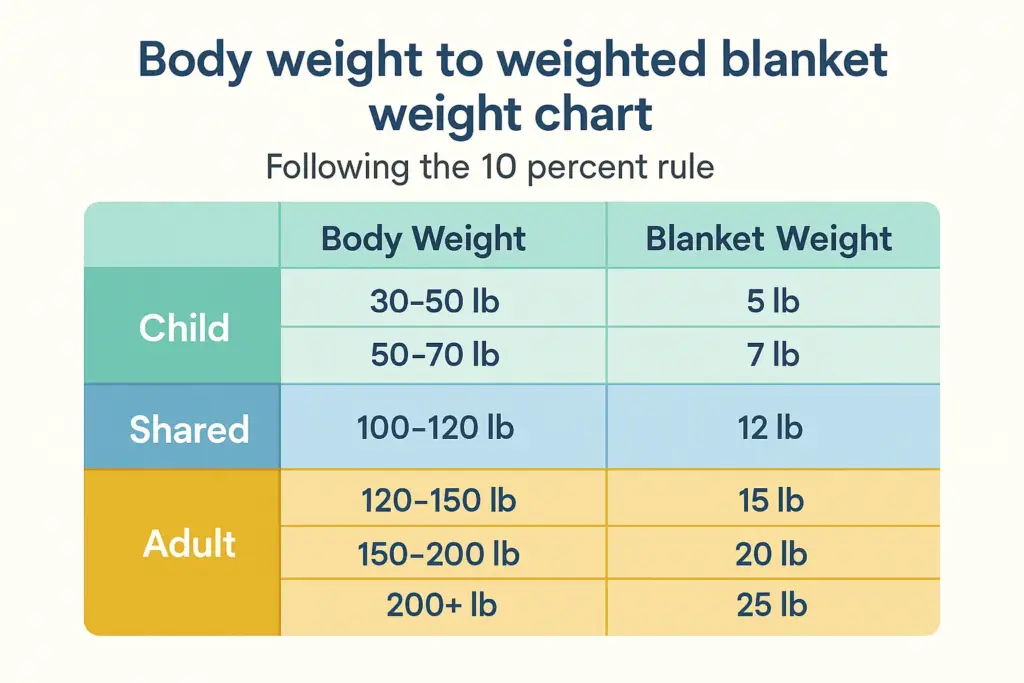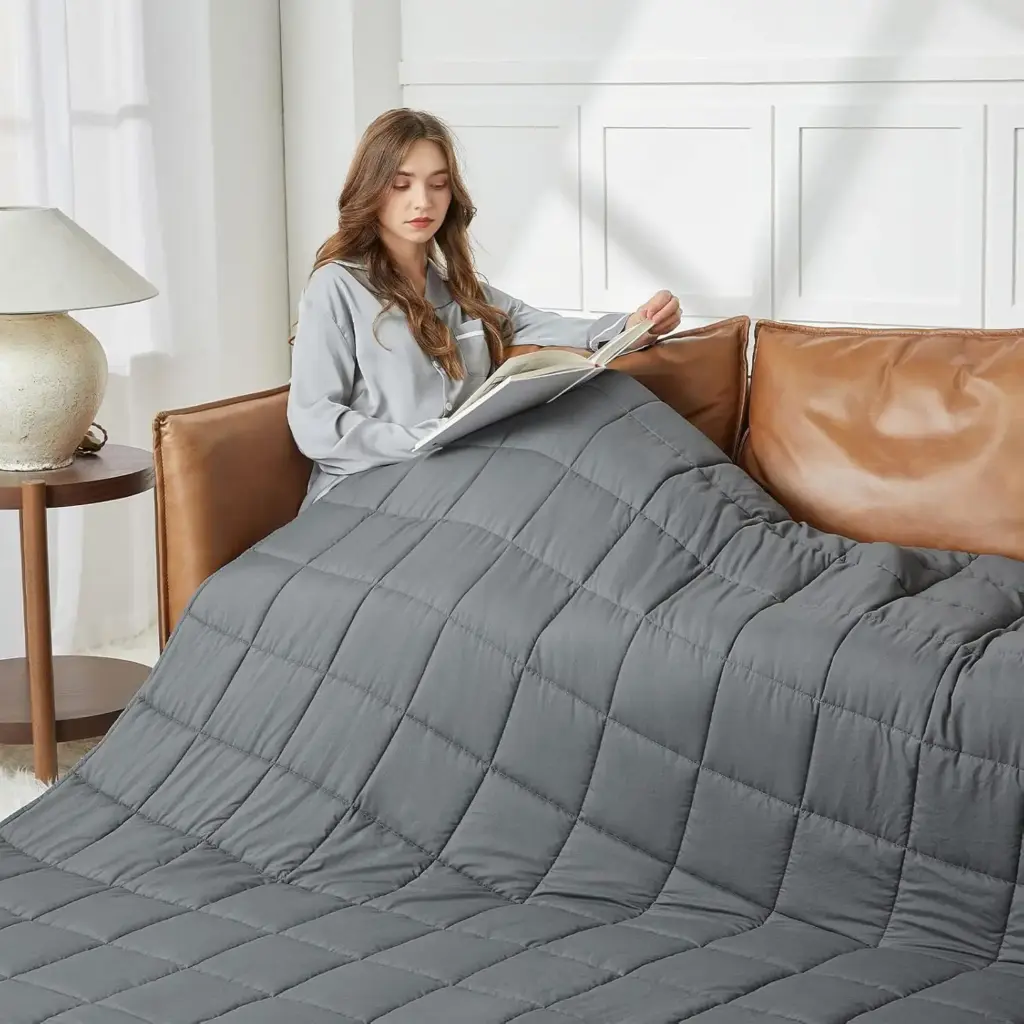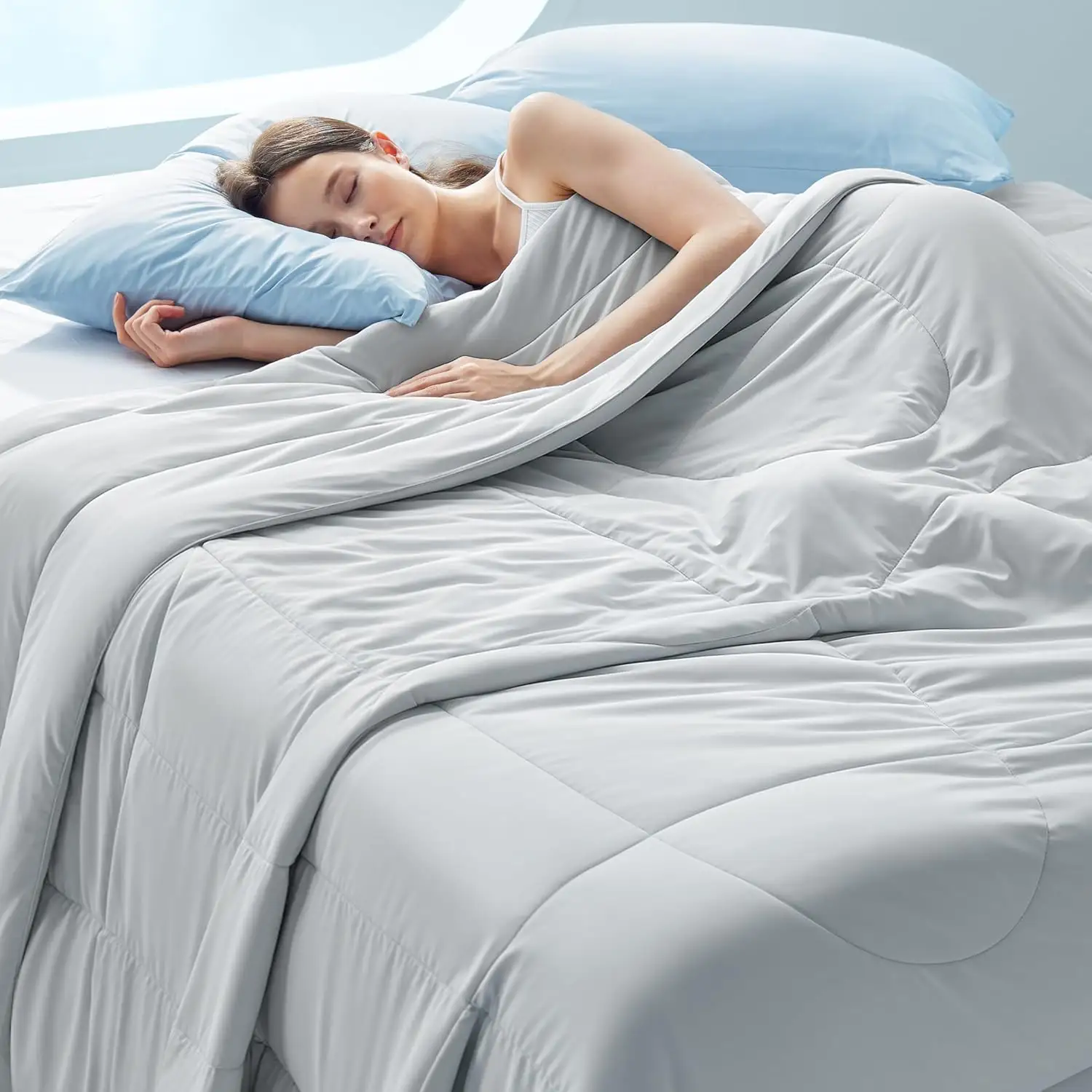Weighted blankets are increasingly used to promote relaxation, reduce anxiety, and improve sleep quality. However, choosing the right weight is essential to ensure both safety and comfort. Too light, and you lose the calming effect; too heavy, and it can become uncomfortable or even disruptive.
This guide will help you determine the ideal weight for your weighted blanket based on personal needs, body weight, and usage scenarios.
Why Weight Matters in a Weighted Blanket
Weighted blankets use deep pressure stimulation (DPS) to mimic the feeling of being held or hugged. This sensation:
- Increases serotonin and melatonin levels
- Reduces cortisol (stress hormone)
- Enhances relaxation and promotes deeper sleep
For DPS to be effective, the blanket must provide gentle, even pressure across the body—hence the importance of weight calibration.
General Rule: 10% of Your Body Weight
The widely recommended guideline is:
Weighted blanket = 10% of your body weight + 1–2 lbs (optional)
| User Weight | Recommended Blanket Weight |
|---|---|
| 40–60 lbs | 5–7 lbs |
| 60–80 lbs | 7–10 lbs |
| 80–120 lbs | 10–12 lbs |
| 120–150 lbs | 12–15 lbs |
| 150–200 lbs | 15–20 lbs |
| 200+ lbs | 20–25 lbs |
These numbers are guidelines. Comfort preferences, age, and sleep style also matter.

Factors to Consider Beyond Body Weight
▸ Age & Health Conditions
- Children: Only use under supervision and choose lighter options (usually 5–7 lbs).
- Elderly or individuals with restricted mobility: Avoid heavier blankets due to difficulty adjusting.
- Medical conditions: Consult a physician for respiratory or circulatory issues.
▸ Sleeping Position
- Back sleepers: Standard weight works well
- Side sleepers: May prefer slightly lighter blankets for easier movement
- Stomach sleepers: Should avoid high-pressure on chest area
▸ Blanket Size
- A larger blanket spreads weight more evenly, so a bigger blanket at the same weight may feel lighter.
- Weighted blankets are usually smaller than regular comforters, designed to cover the body—not the entire bed.
Use Case: Single vs Shared Use
▸ Individual Use
For personal sleep or anxiety relief, stick to the 10% rule for optimal pressure.
▸ Couple Use
If sharing, consider:
- Choosing two separate single blankets
- Compromising at a mid-point weight (~15 lbs for mixed-size sleepers)
- Getting a king-size weighted blanket with zone quilting to distribute weight more evenly

relation product:Custom High-Quality Microfiber Weighted Blanket
What’s Too Heavy?
If you experience:
- Discomfort or overheating
- Difficulty moving or repositioning
- Restricted breathing or circulation
… then the blanket may be too heavy. The ideal weighted blanket should feel snug and secure, but never restrictive or claustrophobic.
Industry Standards & Product Ranges
Most manufacturers offer weighted blankets in the following weight ranges:
- 5 lbs – For toddlers (with supervision) or very light users
- 7–12 lbs – Children and teens
- 12–20 lbs – Most adults
- 20–30 lbs – Heavyweight options or shared use
B2B buyers: Consider offering weights in 2-lb increments to meet personalized preferences and international market standards.
Conclusion
The ideal weighted blanket should be approximately 10% of your body weight, with adjustments based on sleeping style, age, and comfort level. Choosing the right weight ensures that the blanket delivers therapeutic pressure without compromising safety or ease of use.
Whether you’re purchasing for home, hospitality, or retail, matching blanket weight to user profile is critical to product satisfaction and sleep quality.


Leave a Reply